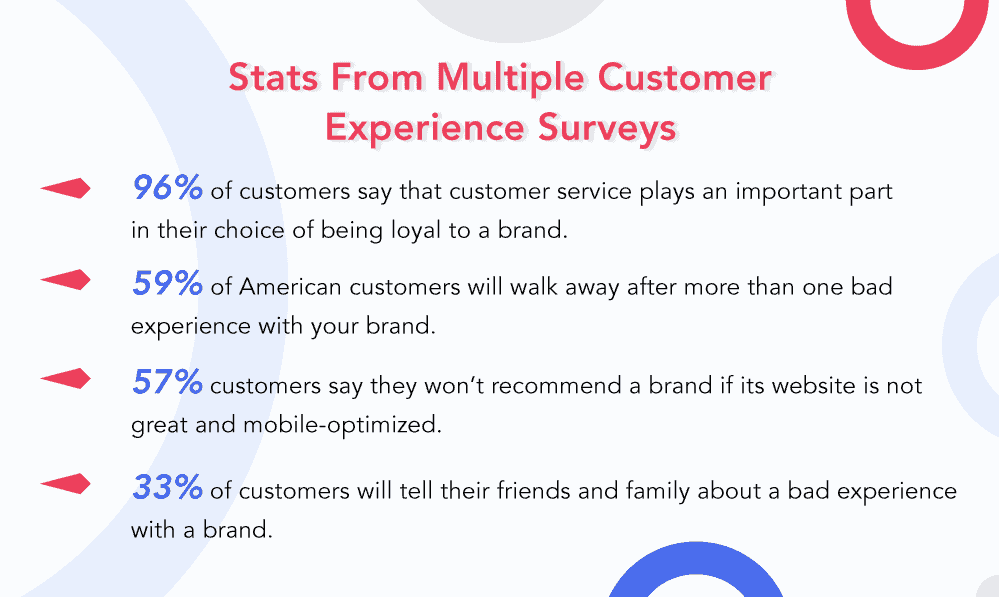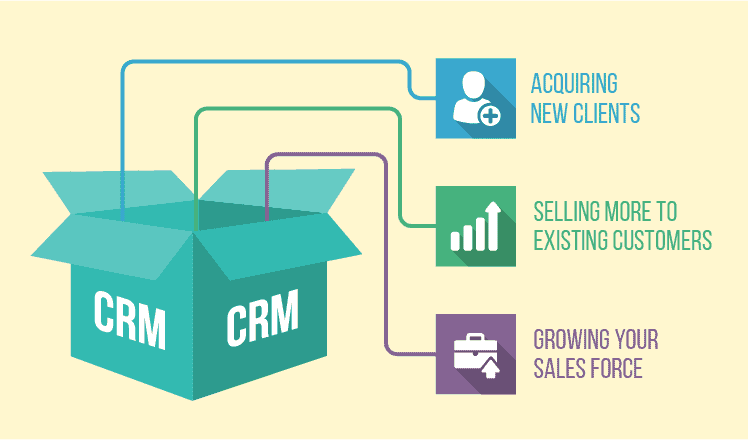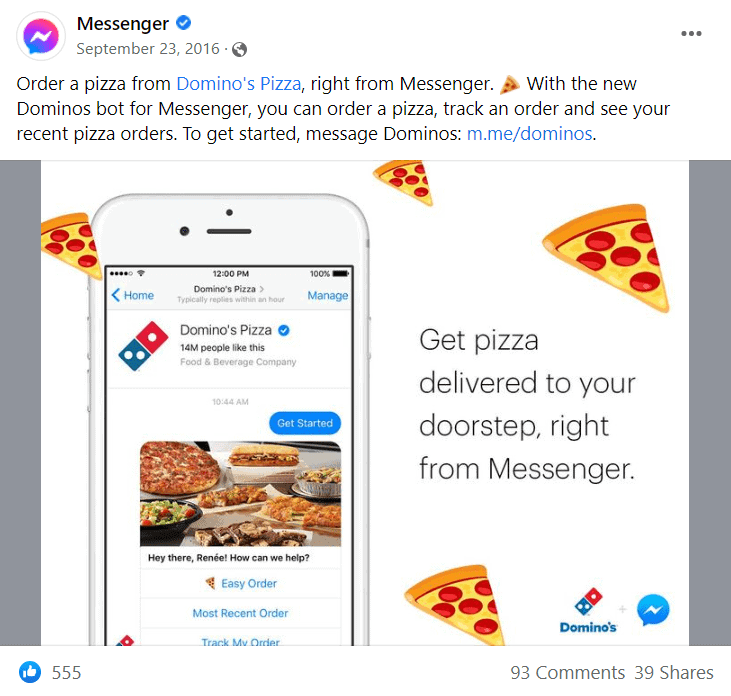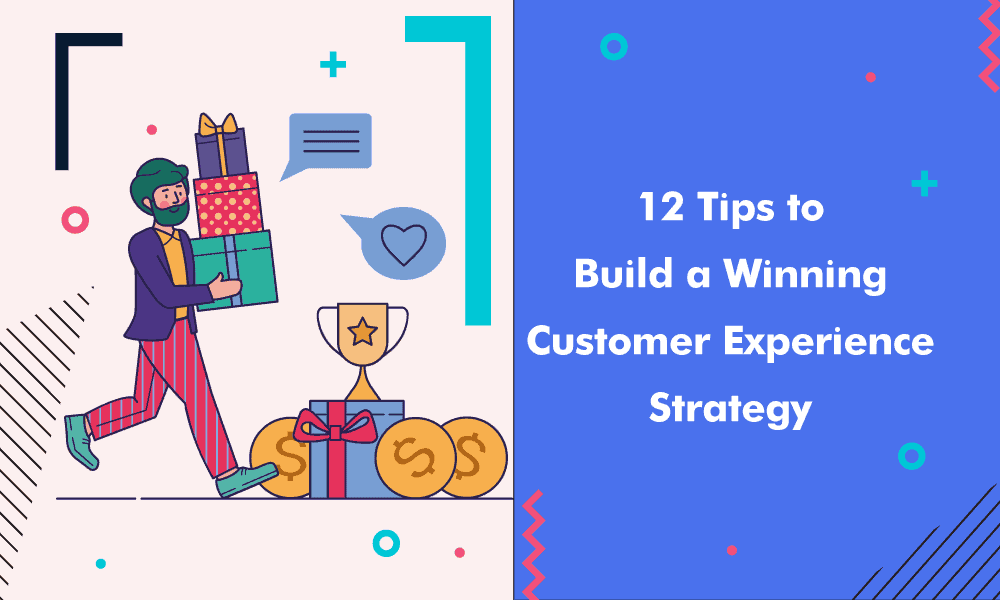Each customer has a particular experience of interacting with your brand. This could be a good or bad experience.
Let’s look at an example to make this clear. Suppose you’re planning to buy a new mobile phone. You are deciding between two identical phones from different brands.

One brand is clear and prompt with its responses and is friendly throughout its customer service. The second brand did not respond to your messages on time and was slow or unwilling to engage with your queries.
You’d obviously buy from the first brand, right? This is just basic human psychology.
While both companies have a customer service team in place, the difference between the two brands is customer experience.
A Forbes survey found that 74% of people would buy something based on the customer experience alone!
That’s a huge number of customers you cannot afford to miss out on. Only a happy customer is likely to become your loyal customer. This means even great products would not sell if the customer experience is poor.
In this blog post, we will deep dive into:
- Customer experience
- Key components of a customer experience strategy
- Why a CX strategy is important
- The importance of omnichannel customer experience
- 12 effective tips for your customer experience strategy
Table of Contents
What is a great customer experience?
A great customer experience is one that is positive and memorable. It is the execution of service or product sales that meets the customer’s needs and expectations, and leaves them feeling satisfied.
A great customer experience can be the difference between a loyal, lifelong customer, and a one-time buyer.
There are many factors that contribute to a great customer experience, such as the quality of the product or service, the convenience of the purchase process, the friendliness of the staff, and the overall atmosphere of the business.
Creating a great customer experience requires businesses to focus on all aspects of the customer’s journey, from pre-purchase research to post-purchase follow-up.
When customers have a warm and positive experience with your company, a human bond is created and nurtured. This is what we mean by brand loyalty.
Whether you work in digital marketing or financial services, every customer interaction is an opportunity to provide a great customer experience.
A customer experience strategy is a roadmap for ensuring a positive customer experience at every customer touchpoint as they move through the entire customer journey.
A successful customer experience strategy will also describe how the company can measure and track its customer experience.
Here are some interesting stats about customer experience:

>>Surveys by Microsoft, PwC, Sweor, and Smart Insights.
What are the key components of a winning customer experience strategy?
A good customer experience strategy has three main components:
- Customer Service: This is a team dedicated to interacting with your customers and the various queries and issues they may have. This is a crucial part of your customer success strategy.
- Technology: This refers to the products and services that your brand is offering. Your technology adoption must meet your customer needs in a big way.
- Design: This refers to all other parameters, like your marketing strategies and product development plans. Creating a seamless, no-hassle experience for your customers should be the most important factor in all strategy design.
Read more: 15 Customer Service Tools for Great Retention Rates
Why is customer experience important for your business?
Customer experience is incredibly important for businesses, as it can directly impact customer satisfaction and retention rates.
Here are just a few of the many benefits of having a good customer experience strategy.
Improved customer satisfaction and brand awareness
When your customers have a great experience, it naturally increases their satisfaction with your brand. Without a great user experience, customers would not make repeat purchases from your brand.
Customer loyalty is built only over time. Only satisfied customers will help you out with word-of-mouth marketing for your firm. This in turn will boost your brand awareness and help you build a solid reputation.
Improved customer retention and reduced churn
One of the main culprits of customer churn is not pricing, but customer experience. A good customer experience is an important weapon in your arsenal that can help you stand out in a sea of competitors.
Ensuring that your customers have an excellent customer experience at each and every touchpoint can go a very long way in increasing your customer retention, as well as reducing churn.
A survey by SuperOffice found that only 1 out of 26 customers would complain after a bad experience. The rest will just leave.
Increased sales and revenue
It is a no-brainer that all your attempts to craft a better customer experience will eventually lead to increased sales. Increased sales obviously mean more revenue for your company.

Having loyal customers who enjoyed superior customer experiences with your company is a huge asset.
Research shows that loyal customers contribute to a 300% revenue hike over a span of 3 years.
Engaged Employees

Providing a great CX ensures that your employee engagement goes up. In a company that is customer-centric, employees are more likely to be loyal. They are more likely to be present and aligned with company goals.
According to a recent survey, companies that deliver a great customer experience have 1.5 times more engaged employees.
It’s a boost to your morale and the employee experience as well.
Read more: The What’s What of Customer Experience Automation
Customer Experience vs Customer Service

It can be easy to assume that customer service and customer experience are one and the same. This could not be farther from the truth.
Customer service is a part of the customer experience for sure. But customer experience goes beyond customer service.
Customer service is the customer support you offer your customers when they face any issues or doubts. It is an isolated interaction and just one step in your customer interaction. Customer service is almost always initiated by the customer. They reach out to your company through their preferred channel — social media, email, or a voice call via the VoIP phone system.
Customer experience, for your business, is the process of ensuring that the customer is happy. It involves anticipating customer needs and satisfying them. Customer experience includes activities like studying drop-off points in the sales funnel, and collecting customer feedback regularly to improve products and service.
This can then help to improve your CX strategy. Customer experience is more focused on building an ongoing relationship with customers at every single touchpoint, rather than an isolated interaction. It is more holistic than customer service activities.
Customer service is one aspect of a positive customer experience. But customer experience is much larger in scope.
Read more: Customer Service Strategy — 9 Lessons from Digital Disruptors
What is omnichannel customer experience?
Omnichannel customer experience is fast becoming a buzzword. It is rapidly growing in popularity and is now a must-have for businesses of all sizes. It is also becoming a sure way to improve customer engagement. But what is it, exactly?
In this era of rapid digital transformation, customers have many channels for interaction. Google search queries, social media, email, and apps are just some of the channels they can use.
Omnichannel customer experience refers to an integrated approach where the company interacts with customers across multiple channels, and treats each touchpoint as part of the same process.
For instance, suppose a customer had a satisfying voice call with your business. Twenty minutes later, they realize that they have another query. This time, they would prefer to chat with your customer support executive to save time.
It is your job to make sure that this customer can seamlessly travel between the two channels. This is an example of omnichannel customer experience as part of a digital customer experience strategy.
If your phone support executives do a good job but your chatbots are a mess, the same customer who was satisfied with your customer support representative might end up giving your business a bad rating or review overall.
With rapid advancements in technology, customer expectations are only on the rise. This means that even small businesses are now expected to provide customers with a seamless, omnichannel service.
Read more: Master Omnichannel Marketing — A Definitive Guide
Why are some segments churning and others staying with you?
This is a common problem faced by many companies. If you’re going through this, remember that you are not alone.
The first step in solving this problem is identifying which segments are churning. Here’s what you can do for churn in different segments:
Short-term churn: The customer churns within the first few months of customer interaction.
This is usually high for most companies. If you have a high churn rate, you can reduce it by ensuring that the right product reaches the right customer. Another strategy is providing faster customer support. If your churn rate is extremely high, you can consider revising your target audience as well.
Mid-term churn: Customers have had some time to use and experience your product. For some reason, they decide to stop using it after a month or so.
You can reduce mid-term churn by focusing your CX strategy on improving customer interactions and customer engagement.
Long-term churn: A loyal customer, who has been using your products for a year or more, decides to leave.
The only way to combat this is to highlight your core values as part of your CX strategy. You can also consider upsell and cross-sell opportunities to keep your long-term buyers engaged. You may also need to offer some loyalty incentives for customers to stay with you instead of going to newer alternatives.
12 effective tips for a winning customer experience strategy
Here are some of our most effective tips that will help you with your customer experience strategy.
1. Understand your customers
Marketing is about staying one step ahead of your customers. It is about anticipating their needs before they know it themselves. This is impossible without understanding your customers first.
When you understand clearly what your customers will value, it becomes easier to keep them coming back. A smart way to do this is by creating buyer personas.
Gathering and segmenting customer data is an important step for your customer experience strategies to actually work out. Here are some questions to get you started:
- Who are my customers?
- What are the causes of customer satisfaction?
- What are potential customers looking for?
Also, keyword research to understand common customer search intent makes for a great strategy. This way, you can anticipate what your customers may be looking for, and provide them with services that will make them the happiest.
Here’s a great blog post by Search Engine Journal on how to understand your target audience and what they’re looking for.
2. Connect deeper with your customers
Merely creating buyer personas will not cut it. You need to be asking yourself what will keep your customers engaged.
Once your customer moves through the sales funnel, you need new customer experience strategies for customer retention. This means taking into account all customer insights.
You need to get really clear on what customer engagement can mean for your business. Once you have your customer data and buyer persona, you have to develop strategies to improve your customer engagement.
One simple strategy is to let your customers know that you care about what they think.
This can be done using different tactics like a social media competition or discount coupons for loyal customers.
Of course, there are no shortcuts and no easy way to do this. You will need to identify CX pain points in your company and work hard to resolve them.

3. Provide real-time assistance with real-time feedback
Providing your customers with real-time assistance ensures that they have a great customer experience.
Live chatbots are a great way to ensure this. You can have your customers chat with a customer support executive. At the end of the chat, you can ask customers for feedback on the interaction.
Delayed assistance is a big faux pas that you must avoid at all costs.

In fact, delayed assistance always leads to a lower customer satisfaction score (CSAT).
You can also consider creating a Knowledge Base for your products and offer DIY kits. This will help your customers resolve common problems by themselves.
Another important aspect is collecting customer feedback in real-time. Your goal should be to collect as much data as possible at each touchpoint.
Without customer insight, you are unlikely to get a sense of where you are making mistakes. A good option is to automate your feedback loop.
Identify unhappy customers at the earliest stage in the customer journey to convert them into happy customers. This feedback loop will always be an iterative process. You can use the feedback for better customer experience management.
4. Work on your customer communication skills
How you communicate with your customers can make or break your business. Every company has improved communication skills as part of its company values. But we are not just talking about sharpening your grammar and speaking skills.
Your entire CX strategy has to ensure flawless, clear communication at every contact center. It is best to avoid too many scripted conversations, especially for the first interaction.
Make sure that every first interaction with your potential customers is nice enough for them to remember it as a happy moment.
5. Create a customer loyalty program
It is not easy for every business to meet customer expectations and have return customers. It is important that you keep your loyal customers engaged at every touchpoint. The more innovative your program is, the better.
For example, Starbucks Rewards gives great incentives. As you buy more and earn more points, you will be able to get free coffee. Or, you can freely customize your drink until it is just right for you.

Here, they are capitalizing on what their customers want from them. They could have offered free hats or t-shirts, but that is not why customers come to Starbucks.
This is a great example of a superior customer experience.
Read also: Five-Star Reviews: What Does It Take to Get High Marks from Your Audience?
6. Analyse customer feedback with the right metrics
Knowing the right KPIs to track is as important as collecting customer feedback. Here are the metrics you should not miss at any cost.
Customer Effort Score (CES)
A Customer Effort Score measures customer experience in terms of how “easy” or how “difficult” it was for them to complete a particular action.
Now suppose your customer contacted your service center to resolve doubts. Once they are done, you can send them a survey. This can have a question as simple as “How easy was it to resolve your issue?”. You can define a response scale of 1-10, the latter being the easiest.
Customer Satisfaction Score (CSAT)
Here, the name gives it all away. CSAT is a measure of how satisfied your customers were with your brand after an interaction. CSAT focuses on specific touch points and asks whether they were satisfied or not.
Time to Resolution (TTR)
Time to Resolution is the average of the time taken by your customer service team to resolve a ticket.
To calculate TTR, first, add the total time taken to resolve all tickets. Then, divide this by the total number of tickets resolved. You have your TTR.
Net Promoter Score (NPS)
Net Promoter Score is a measure of customer loyalty. It measures whether they would be interested in becoming advocates for your brand.
You can gather data for NPS by asking a simple question — Would you recommend this product/service to your friends/family?
Having a good customer relationship management system (CRM) can help you gather data for these metrics. Ensure that the most important CRM functions are automated.

7. Train your customer service team regularly
This is an important customer experience strategy. A knowledgeable service team is a foundation for providing exemplary customer service.
Training them once will not be enough in this competitive market. To see continued customer satisfaction, your team must be trained at regular intervals.
Instead of making training sessions a bore, try to think of them as a tool to boost employee experience. Your team should be able to look forward to these sessions.
For example, you can have role-playing sessions or simulations where your team can apply their knowledge to various situations.
Ensure that the entire team receives the same level of training. Include some dynamic team-building exercises as well. This would make for a fun day at the office for your team.
You can also take steps like making the customer service team’s language more inclusive for people of different races, religions, genders, and ethnicities.
For instance, using the pronoun”they” instead of saying “him or her” can go a long way in making customers from the LGBTQA+ community feel comfortable.
This may seem like a small step, but it goes a long way in improving customer experiences. One happy customer can spread the word and bring in many more 🙂
8. Turn negative complaints into a positive customer experience
Nobody likes getting complaints, right? But the way you handle complaints from customers can speak a lot about your company. Our tip? Don’t deal with it in a generic way.
Go out of your way as far as possible to turn this into a memorable experience for your customers.
Here’s a story for a great example of this from JetBlue.
When JetBlue passengers were asked by the airline to report two hours early to help the staff with a transition to a new booking system (Sabre), JetBlue Airways Chief People Officer Dave Clark engaged the passengers in trivia and games, and handed over free flight tickets to anybody who gave the right answers.

Under usual circumstances, this would be a situation where customers are likely to complain. Instead, Dave Clark, who was HR vice-president at Nike before he joined JetBlue, was able to transform this into a positive experience his customers will never forget.
As you can see from this write-up, customers even shared the experience to spread the word about the good work done by JetBlue here.
Even if your budget doesn’t allow for such grand gestures, you can find smaller ways to turn these sticky, negative situations into positive ones. You just got to show the customer you value their time and opinion above all else.
9. Track social media and review sites regularly
Monitoring your social media channels is a given. You need to practice active listening and draft quick, appropriate responses to comments and reviews.
Even if you get a bad review, it makes sense to reply to the customer. It shows business accountability to valued customers.
You can use tools like Hootsuite to automate your tracking and gather data about conversations.
Have a game plan for your team to tackle negative comments and reviews. All of this will help you in the long run.
10. Use customer journey mapping
A customer journey map is a visual representation of your customer’s experience with your company. Each stage of the customer lifecycle is clearly mapped out. It should also have clear descriptions of every interaction and every customer pain point.
You can use this customer journey map as a guiding light to keep up with the ever-evolving needs of customers.
Read more: Enhance Your Customer Journey with Marketing Automation
11. Create breakthrough CX using AI and Chatbots
Your CX experiences can be enhanced with AI and machine learning. One great example is Domino’s Pizza, where they now let you order pizza through the Facebook messenger chatbot!

All this and more is possible. The latest technology helps you gain real-time insights into customer behavior and modify your CX strategy accordingly.
Another great option is introducing a chatbot.
A chatbot can engage with your customer 24×7 and can also help in sending your customer down the sales funnel. Based on your budget and needs, a bit of research on AI and machine learning solutions will help improve customer satisfaction in the long run.
12. Offer omnichannel support
If you don’t offer omnichannel support, your customers are unlikely to be impressed. Multi-device digital engagement is going to be the new normal.
It is not just about providing support over multiple channels anymore. It is more about providing a seamless and integrated approach in each channel.
A study by Harvard Business Review found interesting results about omnichannel support.
They found that customers who use more than one channel tend to spend more on your business. And this is a powerful strategy to get these high-spending customers to become return customers.
Read also: 10 Excellent Customer Service Tips to Stay Ahead of Competition
Conclusion
Customer experience is the future of business. In such a competitive market, it is your customer experience strategy that will help you build brand awareness and customer loyalty.
Let us know what CX strategies you already use for your business and which strategy you liked the most from our list.
If you’d like to know how EngageBay can help you engage with your customers better, just sign up for free or schedule a call with our experts!


